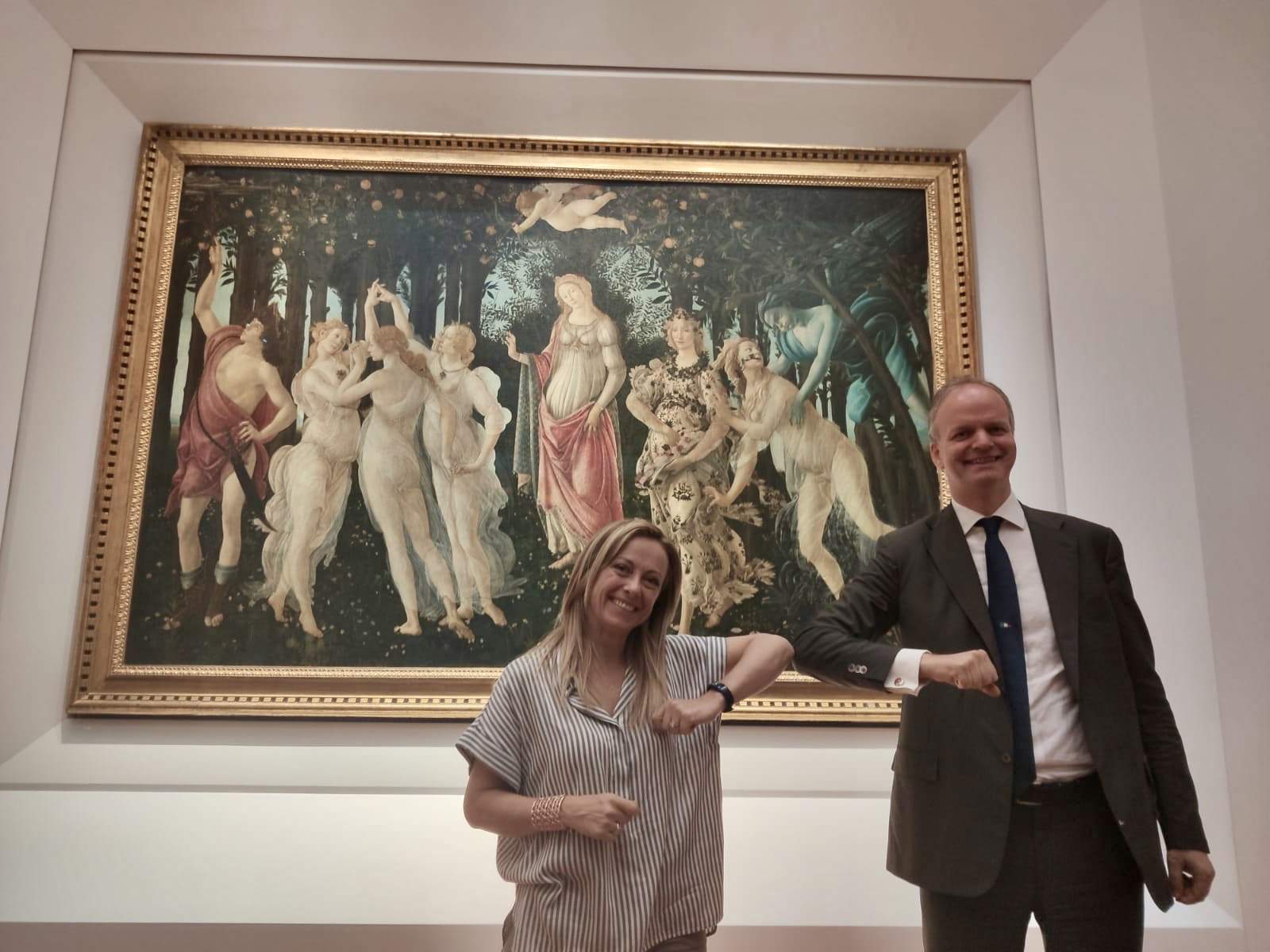Hundreds, if not thousands, of reactions on social media to Fratelli d’Italia President Giorgia Meloni’s visit to the Uffizi yesterday. Meloni toured the museum on a two-and-a-half-hour tour, accompanied by director Eike Schmidt, taking a selfie in front of Botticelli’s Primavera, posing for a photo with the director himself, and lingering especially, the institute’s press office reports, in front of Botticelli’s Calumny and Madonna of the Pomegranate, Hugo van der Goes’Adoration of the Shepherds, Filippo Lippi’sCoronation of the Virgin, Caravaggio’s Medusa, and Titian’s Venus of Urbino.
Giorgia Meloni also shot a one-minute video, posted on her Facebook page, in which she invites viewers to visit the Uffizi. “Here are kept more than three thousand extraordinary works, of inestimable value, which are our history, our greatness in the world, our identity,” Meloni says in the video. “Yet a great many Italians a museum like this have never visited it. They know it, maybe they have been when they were children with school, but then growing up, even the lines (which thank God here are always kilometers long) of times have deterred many Italians from visiting this museum. This is the time to do it, to help realities like this to recover the drama of not having foreign tourists, to be able to go on, to walk, to survive, to continue to be rich, to continue to be visited. This is the time to visit our jewels like the Uffizi: stay in Italy, come and visit them.”
Long gone seem to be the days when Meloni engaged in a street confrontation with the director of the Egyptian Museum, Christian Greco, attacking him over the discount reserved for Arabic-speaking people, or when she went to the Museo Leonardiano in Vinci with a banner to affirm, with an improbable video that at the time was immediately included among the masterpieces of trash, the Italian-ness of Leonardo da Vinci. Now, a quieter Meloni, captivated by the works of the Uffizi, plays the role of the champion of culture by inviting the people of the web to go and see the Florentine museum. The photographs and video literally set social media abuzz, starting with her electorate.
There are many of Giorgia Meloni’s voters who appreciated her visit and invitation, but there are also many others who turn up their noses: the comment with the most likes is from a user who says “we want the layoff, we are tired hungry and desperate! Then maybe I can go see the museum.” On the same tenor many other comments. Then there are those who, evidently considering culture a pastime (or deeming Giorgia Meloni’s visit nothing more than a mere catwalk), invite her to go to work. Then, as per the typical sovereignist cliché, comments are wasted on the nationality of the Uffizi director, and the waffling of those who would like to see an Italian in her place. Then there are those who consider the visit a privilege: “we common mortals,” writes one user, “pay the ticket and get by, His Excellency escorted by the Director will have paid a supplement?”
On the pages of art enthusiasts, on the other hand, there are questions about how appropriate it is for the director of the Uffizi to accompany a political leader who has no institutional position on a visit, giving public prominence to the visit. And even in this case, comments are divided between those who do not think it is appropriate and those who think there is nothing wrong with it. Nor is it certain that it could not be a stance by Meloni in defense of an institution attacked for the Black Presence project, which intends to emphasize the black culture of the Uffizi’s works, and which has been seen by several as an ideal “kneeling” in Black Lives Matter terms: likely? But the main question that perhaps needs to be asked is: but if political leaders visited museums more often, even visiting small ones, and more frequently than they do today, would anything change for culture? What would happen, in short, if visiting museums became a habit for politicians?
 |
| Giorgia Meloni at the Uffizi: what if visiting museums became a habit for politicians? |
Warning: the translation into English of the original Italian article was created using automatic tools. We undertake to review all articles, but we do not guarantee the total absence of inaccuracies in the translation due to the program. You can find the original by clicking on the ITA button. If you find any mistake,please contact us.